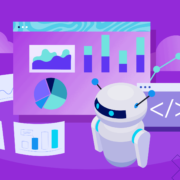Five ways B2B sales leaders can win with tech and AI – McKinsey & Company
B2B sales leaders today stand at a crossroads. The environment they face is dynamic and challenging. Economic growth is uneven across the world, competition is evolving, and B2B customers are adopting many more consumer-like behaviors, seeking more robust buying experiences, and showing a willingness to find alternative vendors. How can B2B leaders break through in such a challenging landscape?
This article is a collaborative effort by Eric Bykowsky, Guilherme Cruz, Jean-Charles Devignes, and Maria Valdivieso, with Cristiana Torres, representing views from McKinsey’s Growth, Marketing & Sales Practice.
Of course, companies still need to execute on core principles of commercial excellence—which include operating with a thoughtful strategy, delivering effective value propositions, optimizing for a wide variety of channels, and sustaining growth. But to stay on the front foot, B2B sales organizations can leverage technology to find the right markets while discovering, retaining, and delighting customers across all channels.
Today’s leaders understand the value of embracing innovation and using cutting-edge technology to execute strategies. McKinsey’s latest B2B Pulse Survey reveals a widespread willingness to adopt advanced digital solutions. And yet only 20 percent of respondents say they have a proven track record of consistently implementing technologies that fuel outsize growth. That means there’s still a wide-open playing field for players who want to get ahead.
Smart efforts will likely pay off. Top leaders who can turn growth mindsets into action can unlock success. A McKinsey study on courageous growth found that companies that outperform on growth invest more aggressively in digital-led transformations and AI to boost sales and marketing productivity. Companies that master innovation see an additional four-percentage-points-higher cumulative TSR growth than their peers.
Our team sought to understand how successful B2B sales organizations use technology for greater accuracy and speed. We spoke with more than 70 commercial leaders around the world to uncover how they propel above-market, sustainable growth trajectories.1 We found that they use tech and data to get a more precise view of opportunities, eliminate time wasted on low-yield initiatives, empower sales teams with better information for nuanced decision-making, and optimize resources, pitches, and pricing. Doing all this can help growth leaders get in front of industry trends, high-growth markets, and specific customer opportunities before their peers.
The most successful B2B players are leveraging technology in five key ways to rewire their approach to growth and outgrow their peers. In this article, we take a granular look at these tactics:
AI helps companies identify high-potential opportunities and better avoid low-return efforts. There are five possible key use cases in which AI can help: identify fast-growing niches adjacent to the exiting business, drive better engagement and conversion via microsegmentation, cross-selling, surface opportunities to acquire and retain customers, and manage churn.
Companies are using AI to identify attractive opportunities outside their core business. AI-enabled tools can analyze extensive data to suggest white space markets for existing products, identify new verticals, or brainstorm product development opportunities to use distinctive technologies in adjacent spaces. These models can help sales representatives develop and prioritize opportunity lists related to themes, assessing relative competitive advantage with potential customers, mergers and acquisitions targets, or partners. Additionally, AI can help sales reps analyze web buzz, intellectual property, or investment trends.
Machine learning (ML) allows companies to segment customers, examining attributes that may lead to sales, prioritizing customer groups, and tailoring offers accordingly. Using a variety of data sets, ML analyzes a series of customer variables (such as industry, region, and size) and buying patterns (such as volume, shipment size, and transaction timing) to create customer microsegments. These insights inform decisions such as how to personalize value propositions or prioritize leads.
Gen AI, combined with external data sources, can create a granular view of a market. This includes a robust map of potential customers, projected spend by product line, current share by customer, and detailed customer data (such as industry, subindustry, purchase trends of similar customers, and location). When integrated with a customer relationship management (CRM) system, this information can be converted to leads that are qualified by an inside sales team and turned into sales opportunities. This can significantly expand the new customer pipeline.
Sales organizations using opportunity identification through AI are already seeing positive impact. For example, a logistics company uploaded more than one billion data records to an AI-enabled product recommendation engine, which created customer segments based on attributes such as location and buying patterns. The engine then scanned product categories to rank and identify the top three recommended cross-selling opportunities across categories, with a rationale for why it determined each recommendation would be the right opportunity.
The company embedded the tool into its existing customer relationship management (CRM) system, where sales reps could accept or reject the opportunities. Their feedback helped the AI engine get smarter with each interaction. This pilot project enabled the company to identify promising cross-selling opportunities that reps would have never been able to pinpoint manually. Based on early results from this product recommendation engine, the logistics company anticipates that it may increase annual sales by $100 million.
Combining AI with rich customer and transaction data sets helps companies unleash new insights into which products may resonate with existing customers for cross-selling. By analyzing customer purchasing decisions, these insights can be converted into tools that automatically generate recommendations for account executives on which products to consider cross-selling (see sidebar “Informing sales through AI-driven opportunity identification”).
AI can also help address the challenging problem of customer retention by examining several factors such as pricing, service, or product features, helping sales leaders understand the reasons behind customer churn and when it might occur. By deploying analytical methods, including sentiment analysis and behavioral data in customer interactions, companies can now better anticipate the key drivers and levels of future churn across different markets, business lines, and individual customers. Equipped with such knowledge, companies can identify and implement proactive measures for effective retention.
Gone are the days when companies could apply a one-size-fits-all approach to their customers and products. Customer pain points and needs are becoming increasingly specialized and industry-specific, and companies can adjust by tailoring their offers and pitches. Technology can help drive value by better tailoring two forms of customer interactions: personalized value propositions and marketing, and gen AI–enabled customer experience (CX).
Companies are harnessing gen AI to create marketing materials at scale, adopting content to reach specific consumer personas at different stages of a sale, and routing messages to preferred outreach channels. Gen AI can enhance conversion rates by turning a typically manual, time-intensive process into an automated one that delivers effective customized content—everything from articulating a buyer’s pain points to translating how a product can create business value.
The enhanced marketing approach is also coupled with verticalization, focusing on specific industries or market segments so companies can tailor to specific needs. Companies are identifying priority verticals and shifting their sales approach accordingly. With gen AI and verticalization, companies can achieve scalable, personalized marketing that enhances customer engagement.
As companies refine their customer communications and provide improved experiences, the impact is clear. For instance, one heavy-equipment distributor developed a gen AI solution that leveraged more than 13,000 company documents to produce answers to questions that might be posed to a customer service chatbot. It integrated the tool into a customer relationship management (CRM) platform, providing sales reps with real-time, best possible answers derived from company documents and the context of questions. The chatbot has reduced call and research time, and offers action-driven guidance to sales reps, which increases their success rate as they resolve customer problems. The company implemented a pilot solution in just four weeks. It spurred a 90 percent decrease in average resolution time (from 15 minutes to less than one minute) and a ten-percentage-point improvement in finding the right resolution on the first attempt.
As customers seek swift resolutions to inquiries, companies can use gen AI to automate customer touchpoints with chatbot tools. Integrating these chatbots into customer portals can lead to faster incident resolutions and improved customer experiences, thus driving faster and more effective engagements (see sidebar “Improving service with chatbots”).
With rising competition and costs squeezing margins, businesses may be increasingly considering disciplined and agile pricing. Companies can implement effective pricing strategies in three ways: price optimization, dynamic deal scoring, and price performance management.
Using tech-enabled pricing tools, businesses can automatically set, update, and monitor prices to maximize value for the customer and the business. With real-time dynamic algorithms updated on micromarket data, these tools can define pricing levels based on preset rules, heuristics, and parameters. Streamlining price management in this way ensures that pricing decisions are made in a timely manner to adjust to business and economic changes.
Companies are harnessing the power of AI to identify pricing packages and discounts to ensure that the right price is consistently offered to the right customer. Cluster-based models analyze similar deals and assess willingness to pay, creating scoring mechanisms that accurately reflect the true value of deals. This approach establishes guidance and guardrails to propel effective pricing execution.
The strategic use of digital pricing levers has helped several companies capture additional growth. One prime example is a metal packaging player that implemented an advanced pricing management tool. The company first developed a new pricing architecture based on key microsegments (such as types of contracts, orders, shipments, services, and customer industries). It then created a transactions database to identify margin leakages in real time, allowing account executives to incorporate insights directly into negotiation processes. With these tools, the packaging company was able to dynamically tailor pricing to specific customer profiles and erase the pricing and margin erosion affecting its product portfolio. The result was a 3 percent improvement in margins over two years due to more effective pricing.
Beyond price optimization, it’s also important for companies to create digitally enabled tools allowing for a more transparent, real-time understanding of price performance. Companies are using AI to create transaction databases that assess margin leakages and profitability. This offers visibility into margin improvement initiatives (see sidebar “Increasing margins with price management tools”).
New technology can be a powerful tool for sales teams looking to become more efficient and productive. With AI tools in hand, they can outpace competition, be first to market, and make smarter and more nuanced decisions. Technology innovations help automate go-to-market seller tasks in four key ways: ML-powered dynamic resource allocation and lead routing, auto-generated or auto-enhanced responses to requests for proposals (RFPs), automated account plan creation, and lead management.
A major factor in B2B success is understanding what sales leads to prioritize. Traditional metrics such as potential deal size might not help sellers use their time effectively. Companies can now use ML models to score leads and identify the sales prospects that are most likely to close. By analyzing various lead characteristics and cross-referencing them with transaction data, companies can create priority lists and assign account executives to top prospects.
Responding to RFPs is a time-intensive process. If done incorrectly, it can cause companies to lose attractive opportunities. Gen AI is helping to solve this problem by auto-generating responses using rich sets of data. Gen AI tools can prefill details on client priorities, competitive assessments, and how a company’s solution is differentiated to create a compelling pitch. These tools also include a chatbot that can answer questions about customer profiles, forecasts, and plans to support account executive analysis and enhance RFP response prep.
Go-to-market levers can empower organizations to become more efficient across the board. A standout example is a telecom provider that developed a gen AI model to generate drafts of account plans, including core sections on customer profiles, forecasts and objectives, and next steps assigned to specific teams. The account plan was then integrated into a dashboard in the customer relationship management (CRM) platform, providing a single source of truth for account executives. They could review content, assisted by a gen AI chatbot that incorporated external and internal data sources to effectively answer questions about the account plans. This new tool led to deep impact for the telecom provider. Account plans that typically took more than ten hours to customize were now produced in minutes, significantly streamlining the sellers’ research and insight generation process. The company expects that within a year, it will experience a 5 to 15 percent sales uplift from using gen AI–automated account planning.
Effective account planning is often one of the most important elements driving account executive success. This is another area where gen AI is streamlining a process that can be significantly time-consuming, while also providing next-level account insights. Gen AI tools create account plans that automatically provide details about customer profiles and objectives, assess opportunities, and create action plans after scanning market and company research with CRM data on pipeline performance (see sidebar “Greater efficiency with automated account planning”).
From initial outreach to post-sales support, customer interactions can assume the bulk of a sales organization’s time. Gen AI can help accelerate these interactions, particularly in written communication use cases. Gen AI tools can auto-draft emails and responses to customers while also providing real-time guidance on next-best steps for how to effectively address inquiries.
In today’s changing environment, a high-caliber sales force is more important than ever. New skills requirements, such as coding and real-time problem-solving abilities, are forcing companies to be serious about upskilling and reskilling at scale. Two digital dimensions can help deliver this to B2B organizations: performance management and capability building.
Effective performance management is critical to ensure that account executives are on track to meet quotas and company goals. Technology is increasingly playing a pivotal role, enabling companies to create interactive, digital dashboards to serve as the single source of truth on performance across hierarchy levels. These granular dashboards provide real-time visibility (with executive, business-line, and individual views) into forward-looking and historical key performance indicators (KPIs), such as conversion rates and new net annual contract values. Combined with a systematic review cadence, the dashboard outputs can be translated into actions that companies need to take to drive performance improvement.
Improved performance management and capability building can enhance revenue growth. For instance, a logistics provider analyzed 80,000 sales calls to identify areas of improvement in customer interactions. The company adopted a gen AI voice analytics tool to generate insights from these calls, following a six-step process: converting calls to text with automated transcription, redacting personally identifying information, preprocessing transcripts to structure data and reduce noise, running large language model prompts, validating results with automated natural language processing mechanisms, and analyzing insights.
In the final analysis phase, the company used AI to identify the original intent of each call. It then determined the key reasons customers declined sales, analyzed agent behaviors and tactics for converting the sale, and understood the impetus behind order cancellations and other negative customer sentiments. From this, a gen AI tool then provided insights across a variety of themes to unlock revenue, including lead generation and retargeting, time savings, outreach strategies, and performance management. In a 12-week pilot, the company increased its overall conversion rate to 3.0 percent, from 1.8 percent, with the potential to generate $120 million in annual incremental revenue once scaled up across the enterprise.
Training is especially critical in challenging environments, since traditional coaching methods often fall short in addressing dynamic needs and lack the specificity needed to bolster performance for each account executive. Gen AI can assist with tailored capability building, identifying skill gaps and coaching insights for each account executive to become a more effective seller. Notably, gen AI is used in speech analytics to analyze customer calls and assess customer intent, agent behaviors, conversion drivers, and cancellations to identify areas for improvement (see sidebar “Boosting revenue with AI-driven voice analysis”).
These five tech levers can empower companies to approach sales fundamentals with greater accuracy, depth, and speed; however, technology alone is likely to be insufficient for sustained performance. Successful growth transformations also benefit from a structured execution framework, emphasizing holistic change management with measurable performance goals and tracking. It’s hard to get it right. To implement tech innovation, companies can also effectively implement three pillars of change management:
Together, the latest innovations in technology and holistic change management can drive the next wave of growth for B2B players.
Eric Bykowsky is a partner in McKinsey’s Atlanta office, Guilherme Cruz is a partner in the New York office, Jean-Charles Devignes is a partner in the Paris office, Maria Valdivieso is a partner in the Miami office, and Cristiana Torres is an associate partner in the Austin office.
The authors wish to thank Ege Caliskan, Enrique González Campuzano, Rocío Marazuela, and Wilson McCrory for their contributions to this article.
This article was edited by Christine Y. Chen, a senior editor in the Denver office.








